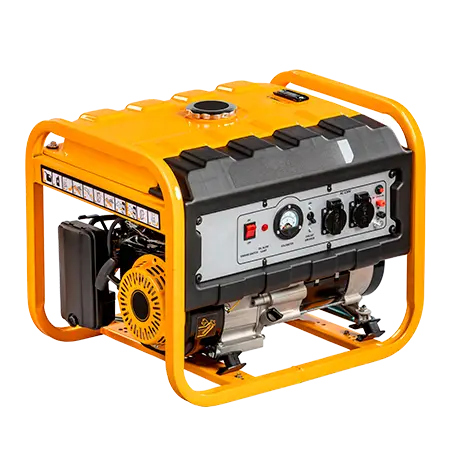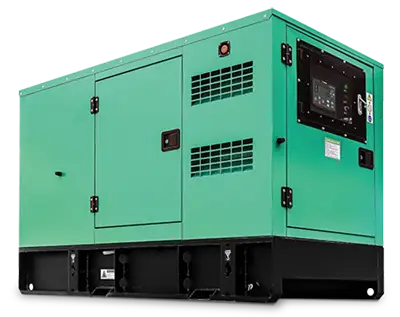
The Toy Box You have the (backup) power
GettyImages
Heavy winds, icy tree limbs, equipment failure—potential causes of a power outage are as varied as they are unpredictable. Energy resilience, or the ability to withstand and rapidly recover from a power disruption, doesn’t just happen. Together, we can learn how to boost your energy resilience because, frankly, that’s what good neighbors do.
In that spirit, here are a few toys to help you fortify your energy supply to withstand storms and other emergencies.
-

Shutterstock
Old- and new-school power generation
First, let’s go old school with an option that will be seen more as a tool than a toy. A portable generator is a budget-friendly option that requires some maintenance, including setting up and refueling your generator. A portable generator won’t power your entire home, but it can provide enough juice to ensure you don’t end up with a fridge full of room-temperature foods. By making sure your generator is connected to your sump pump, you can help avoid ending up with a flooded basement too. That’s energy resilience in its simplest form.
 Standby Generator
Standby GeneratorYour other option is a new generation in power generation. A home standby generator is the best combination of peace of mind and convenience. Unlike portable generators, standby generators are installed with a consistent fuel supply of either propane or natural gas and can be set to automatically turn on if the electricity goes out. Some of these generators even allow you to control them using your smartphone.
A home standby option uses an installed generator, which is much more convenient compared to a portable option. Choose the standby generator and say goodbye to running extension cords to a handful of lights, a fan and the refrigerator. You also won’t be running out into the elements every eight hours to refuel your device.
Now why would you choose the portable option over the much more convenient home standby alternative? Price. While very convenient, a home standby generator can be thousands of dollars more. So, if you have a smaller place and don’t mind the maintenance, you can still get added energy resilience without making such a major investment.
Recently, you’ve had a third option in a power station. Perfect for smaller homes, think of a power station as a microwave-sized, 22-pound rechargeable battery. It won’t have the noise of a portable generator. And it won’t have the steep price tag of a standby generator. It kind of sits in between the two in affordability and convenience. The only real drawback for a power station is that you’ll eventually need to recharge your battery. Some come with a solar option to solve that problem in a pinch.
-

Shutterstock
Calling for backup
Have you ever gone on a trip with a little cell phone backup battery? It’s a confidence builder. You check your email, research your destination and watch all the cat videos your heart desires, all without worrying whether you’ll run out of juice. That’s how a backup battery for your home can make you feel.Residential battery storage systems help make your home less dependent on grid power. These systems enable you to supply backup power to your home regardless of the weather or time of day. This resilience is one of the main reasons some homeowners opt for energy storage.
Battery backup systems also boast a higher energy capacity than standard generators. This means you can maintain your home’s electricity for longer during prolonged power disruptions. You can also find a system with an automatic transfer switch, making an outage virtually unnoticeable to you and your family.
If you really want to celebrate a higher level of energy independence, consider upping your battery game by pairing your battery with solar panels. This move can help you reduce your electricity costs too. For example, you can recharge your battery with solar panels during the day and then use the stored energy during peak energy hours in the evening. This system will also allow you to charge and use your mobile devices worry-free at home, so your cat-video viewing will never be threatened.
With that being said, you can also use smaller backup batteries for your personal devices, like a smartphone or tablet. We know, we know. These smaller batteries don’t have the impressive “toy” factor that a giant battery backup system has, but these smaller batteries don’t come with the giant backup price.
-

Shutterstock
Seal the deal
By sealing air leaks and adding insulation, you can bolster your home’s comfort, and you could save up to 11% on your energy costs. And you can do this by buying a caulk gun. This sucker can really turn up the “toy factor” when working. First, you need to admit you’ve already played with one of these things as a kid. They are fun. They are cool, but let’s not get carried away.
You can start by finding air leaks in the attic, around the foundation and along windows and doors. You can seal these leaks by installing weather stripping around windows and doors and caulking around the foundation. You can add insulation in your attic, crawl spaces and basement walls, as well as to the floors above an unconditioned basement. It’s a relatively quick and easy way to boost your energy resilience.
In short, your home is your castle. Protect it. When you increase your energy efficiency, you can increase your resilience, your savings and your peace of mind. You never know. After all your preparation, you could actually look forward to the next big weather event.
Or not. Probably not. But you will have more confidence knowing you’ve taken steps to safeguard your home, and your energy.
